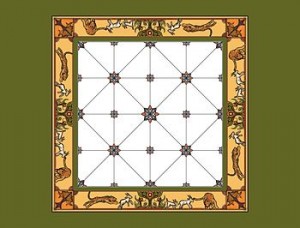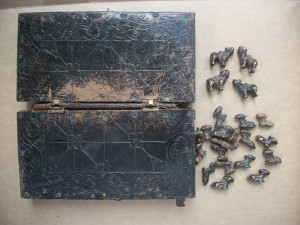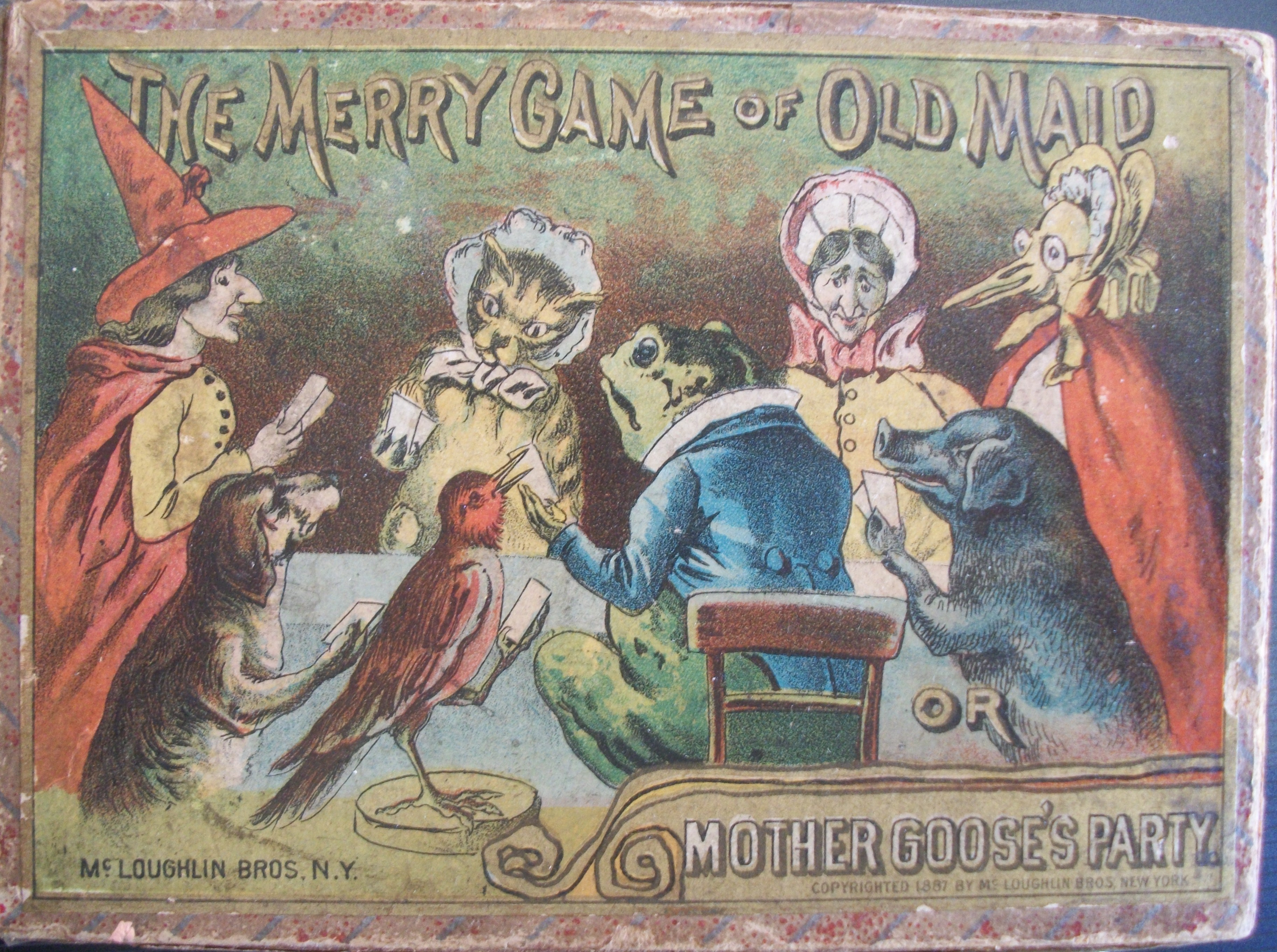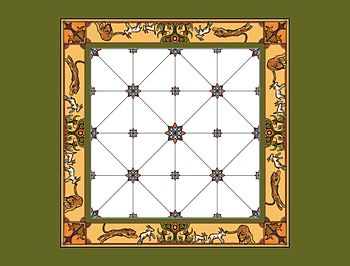 The ancient game of Bagh Chal is categorized as a hunt or chase game. The two-player game, originating in Nepal, has been challenging players for over a thousand years. Bagh Chal, meaning ‘moving Tiger’, consists of two unequal forces and includes 24 game pieces. One player maneuvers 4 tigers, while another player controls 20 goats across a 5×5 pointed game board.
The ancient game of Bagh Chal is categorized as a hunt or chase game. The two-player game, originating in Nepal, has been challenging players for over a thousand years. Bagh Chal, meaning ‘moving Tiger’, consists of two unequal forces and includes 24 game pieces. One player maneuvers 4 tigers, while another player controls 20 goats across a 5×5 pointed game board.
The objectives for the two players are different. The player in charge of the tigers attempts to capture five goats in order to win. The player, who is moving the goats, strives to block all of the tigers’ available movements. These tasks are accomplished by the following rules.
Initial set-up for the game is to place the four tigers onto the board at each of the corner positions. All goats remain off. Play begins by a player placing a goat onto the board at the intersecting points of the board. It is then the tiger player’s turn.
Goats are continually placed, one at a time, after the move of one tiger (for a turn) on the board. Goats cannot move upon the board until all are placed on to it. Once all goats are positioned on board, turns continue to alternate between the moving of tiger and goat.
Tigers can move from one point to the next, or they can jump over a goat (along a line). If they are able to jump over a goat, the goat is considered captured and removed from the board. Only one goat can be captured at a time and a tiger cannot jump over another tiger.
Goats move the same and must defend themselves from tigers by not allowing a tiger to have an open point to jump over them. Goats are successful in winning the game if they can encircle the tigers and keep them from being able to move.
Bagh Chal is similar in style to other Asian Tiger games. No matter the size of the board, or the varying number of the two unequal forces, the larger group of playing pieces (whether called goats, sheep, or calves) never capture. They are the weaker pieces, and must prove their strength by their number. By working together, this force strives to limit movements of the few. This differing power makes a challenging game for both players.
 Games are still hand-made in Nepal today. Many of these boards are created by using a thin sheet of brass to cover a wooden frame. The etched brass sheeting displays a decorative gridded 5×5 point board. A compartment within the wooden frame holds the small brass tigers and goats.
Games are still hand-made in Nepal today. Many of these boards are created by using a thin sheet of brass to cover a wooden frame. The etched brass sheeting displays a decorative gridded 5×5 point board. A compartment within the wooden frame holds the small brass tigers and goats.
The one shown (left) has lost its shine from age and wear of play. I will admit it has seen its better days of condition. However, sitting on a shelf in my game collection, it proves the popularity and fun of the game. A game not played is not worth having. And so I continue to cherish this broken hinged, old, dull thing.

